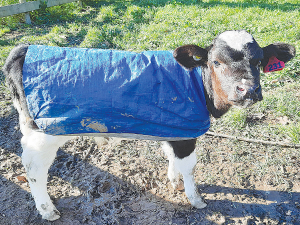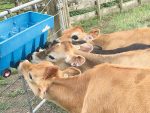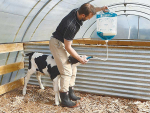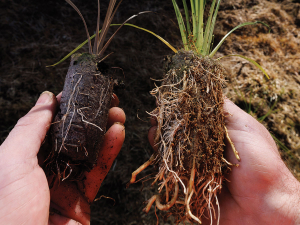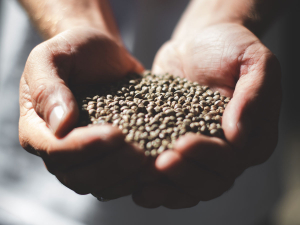Providing a newbown calf with colostrum within 12 hours of birth is vital, we know that. And if maternal colostrum is unavailable or poor quality, a colostrum replacer can provide an essential alternative.
So, how do you go about sleeping the right product?
Price is always a factor but remember that a product selected on price may not give a newborn calf the start it needs.
Consider these points when selecting a colostrum powder:
- Is it a colostrum replacer or a colostrum supplement?
Although, very similar, it's important to note the difference between a colostrum replacer and a colostrum supplement.
A colostrum replacer is designed to completely replace the first feeding of colostrum - most often when high-quality colostrum is not available.
A feed of colostrum replacer will provide at least 100g of Immunoglobulin G (Ig G) which achieving is essential for achieving passive transfer in a 40kg calf.
A colostrum supplement, on the other hand, is designed to be fed in conjunction with maternal colostrum. On its own, a colostrum supplement cannot replace high quality colostrum.
Depending on your requirements, both options provide different benefits. However, a colostrum replacer is more cost-effective; it can be used as the sole source of colostrum or to enrich maternal colostrum.
- Have the vital immunoglobins been protected during pasteurisation?
Products listed as "whole colostrum" are just that; made from colostrum collected from dairy cows. The colostrum must be heat-treated (pasteurised) to eliminate any potential disease-causing agents, such as Johne's disease or M. bovis.
Heat treatment is key here. Where standard pasteurisation involves high temperatures which can reduce IgG content and damage growth factors, whole colostrum is pasteurised through carefully timed heating and cooling cycles with regular testing to preserve the natural ratio of all ingredients, keeping key colostral components intact.
Whole colostrum products provide a valuable source of nutrients, in particular fat - which provides a highly digestible and readily available source of energy for the young ruminant.
These products also contain non-nutritive (growth) factors which support early growth and gut development as well as the establishment of the microbial population in the gut.
A whole colostrum replacer is high fat and high in IgG while many colostrum powders sacrifice fat for a high IgG content, or vice-versa.
The reason for this is that in some processes, they 'de-fat' the product to increase the IgG concentration.
In taking out the fats, an important energy source for the newborn is gone.
Other products are ultra-filtrated to achieve higher IgG concentration. While this helps to ensure a high intake of IgG, the ultra-filtration process can remove many of the important hormones and other growth factors usually found in colostrum.
In the case of low IgG products (with high fat content), you must feed considerably more colostrum to achieve passive transfer of immunity (100g IgG/calf).
When it comes to colostrum replacers, your decision is an important one - you only get one chance to start an animal off well.
Article supplied by AgriVantage.

